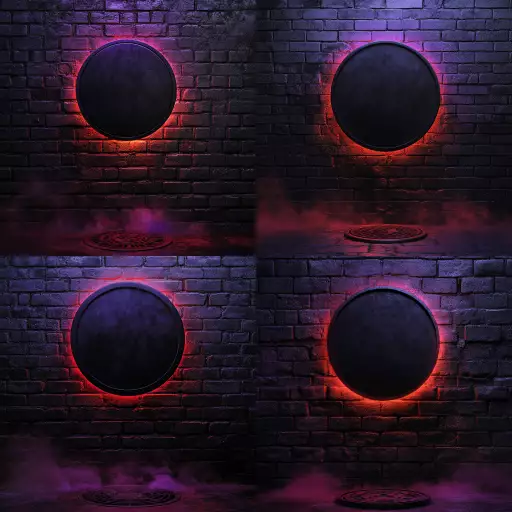Explore the Best AI Image Gallery

Beyond the Canvas: How Edge Computing Empowers Creative Expression
The intersection of technology and creativity has always been a fertile ground for innovation. Today, with the rise of edge computing, this landscape is undergoing a profound transformation. Edge computing, which brings data processing and analysis closer to the source of data generation, is revolutionizing how artists, designers, and creators conceive, produce, and experience their work.
Imagine a world where:
- Artists can create immersive, interactive installations powered by real-time sensor data captured at the edge.
- Designers can rapidly prototype and iterate on products using edge-enabled 3D modeling and simulation tools.
- Musicians can compose and perform music dynamically influenced by audience responses collected and processed at the edge.
These are just a few examples of how edge computing is blurring the lines between physical and digital realms, empowering creators with unprecedented possibilities.
Applications in the Creative Industry
Edge computings impact on the creative industry is already being felt across various domains:
1. Immersive Experiences
Interactive installations, virtual reality (VR), and augmented reality (AR) applications rely heavily on real-time data processing. Edge computing enables creators to build immersive experiences that respond dynamically to user interactions and environmental cues.
2. Personalized Content Creation
Edge computing facilitates the creation of personalized content tailored to individual preferences. Imagine a painting that evolves based on viewer emotions detected by sensors or a music composition that adapts to the listeners mood.
3. Collaborative Design and Production
Edge computing empowers remote collaboration among creative teams. Artists, designers, and producers can work together in real-time on projects, regardless of their physical location.
4. Smart Materials and Fabrication
Emerging technologies like smart materials and 3D printing are being enhanced by edge computing. This enables the creation of dynamic objects that respond to stimuli or change form based on user input.
Ethical Considerations
As with any transformative technology, edge computing in the creative industry raises ethical considerations:
1. Data Privacy and Security
Edge computing often involves collecting and processing vast amounts of personal data. Its crucial to ensure robust security measures and transparent data governance practices.
2. Algorithmic Bias
AI algorithms used in edge-powered creative tools can perpetuate existing biases if not carefully designed and trained. Addressing algorithmic bias is essential for promoting fairness and inclusivity.
3. Access and Equity
The benefits of edge computing should be accessible to all creators, regardless of their resources or technical expertise. Bridging the digital divide is crucial for ensuring equitable access to these transformative technologies.
Future Trends
The future of edge computing in the creative industry is brimming with possibilities:
1. Democratization of Creativity
Edge computing will empower a wider range of individuals to participate in creative endeavors, regardless of their traditional artistic training.
2. Seamless Integration with AI
AI-powered tools integrated with edge computing will further enhance creative processes, enabling more intuitive and intelligent design workflows.
3. Immersive Storytelling and Entertainment
Edge computing will drive the creation of highly immersive and interactive storytelling experiences, blurring the lines between fiction and reality.
As we venture deeper into this era of technological convergence, edge computing is poised to be a catalyst for groundbreaking innovation in the creative industry. By embracing its potential while addressing ethical considerations, we can unlock new frontiers of artistic expression and usher in a future where creativity knows no bounds.






](https://images.ai-img.art/thumbnails/150/00df9b84a8818b4130bce9ca10c0c67ff2bc8952ca0fb5012dafc9b1c6378e67.webp)


](https://images.ai-img.art/thumbnails/150/39c6bd41a1282b304a06fb11053bd009750b3879060719b1adb959228dbcd41a.webp)





](https://images.ai-img.art/thumbnails/150/33a7122c923d87ba243a3afa0b16a930f1603be27b8ac938ff7f4ae4f5140553.webp)

](https://images.ai-img.art/thumbnails/150/8aa2589b60ffe3dde30a265a6cac8d4ae71901c658ca48c4344f21436de413fb.webp)
























](https://images.ai-img.art/thumbnails/150/bc5b40f43007c984885fc5b035e0fd81d75554a8730895e067565a6b7050524b.webp)






